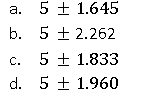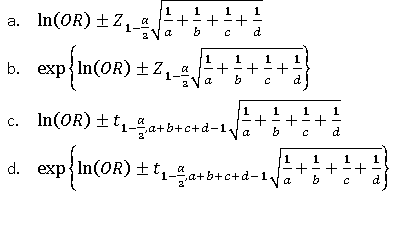Question
1.Which is the narrowest confidence interval from a set of data? a.95% confidence interval of the mean b.90% confidence interval of the mean c.99% confidence
1.Which is the narrowest confidence interval from a set of data?
a.95% confidence interval of the mean
b.90% confidence interval of the mean
c.99% confidence interval of the mean
d.97.5% confidence interval of the mean
2.If the p-value is less than 0.05 in the test of the population parameter , then
a.A 95% confidence interval for will definitely include 0.5.
b.A 95% confidence interval might contain 0.5.
c.A 95% confidence interval will contain 0.3 exactly 62.43% of the time.
d.A 95% confidence interval contains 1.645.
3.If the p-value is less than 0.05 in a test of the population mean , then
a.A 90% confidence interval will be wider than a 95% confidence interval.
b.A 95% confidence interval has probability of 95% of containing the mean parameter .
c.A 95% confidence interval definitely contains the population mean parameter .
d.A 95% confidence interval would contain 1 about 95% of the time.
4.Imagine that a statistic follows the Doha distribution and we perform a test that some parameter is equal to some value .Our critical values for a two-sided test at alpha level of significance are equal to LCL and RCL. We want to know whether there is evidence to conclude that the parameter is different from .
a.We have that evidence if our statistic is less than LCL or greater than RCL.
b.We have that evidence if the p-value is greater than alpha.
c.We have that evidence if our statistic is greater than 1.96.
d.We have that evidence if our statistic is equal to .
5.A sample of size n=9 is drawn in which the sample mean is 5 and the population standard deviation is assumed to equal 3.The 95% confidence interval is


Step by Step Solution
There are 3 Steps involved in it
Step: 1

Get Instant Access to Expert-Tailored Solutions
See step-by-step solutions with expert insights and AI powered tools for academic success
Step: 2

Step: 3

Ace Your Homework with AI
Get the answers you need in no time with our AI-driven, step-by-step assistance
Get Started


